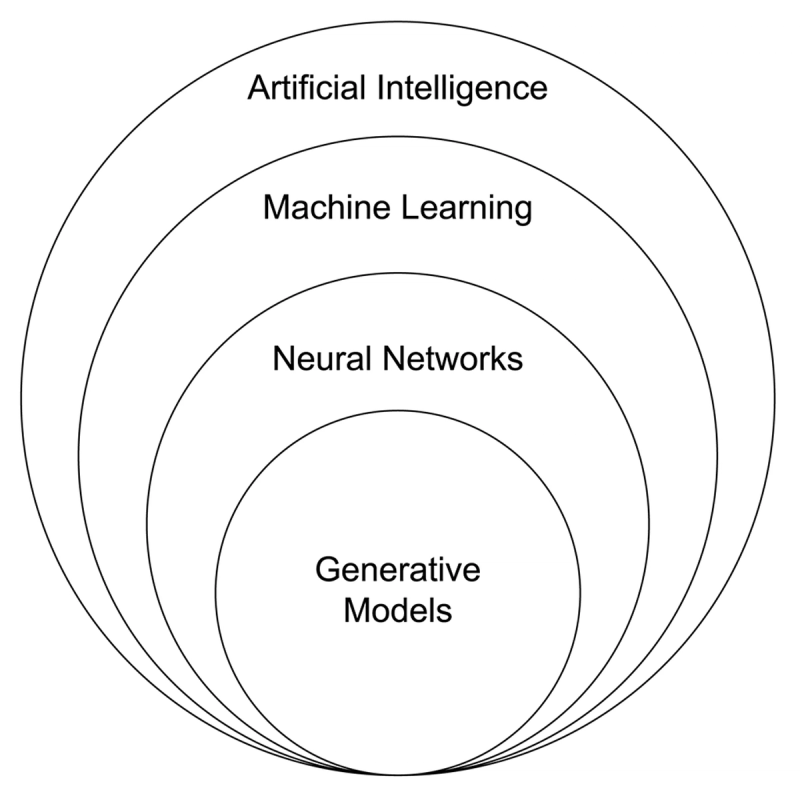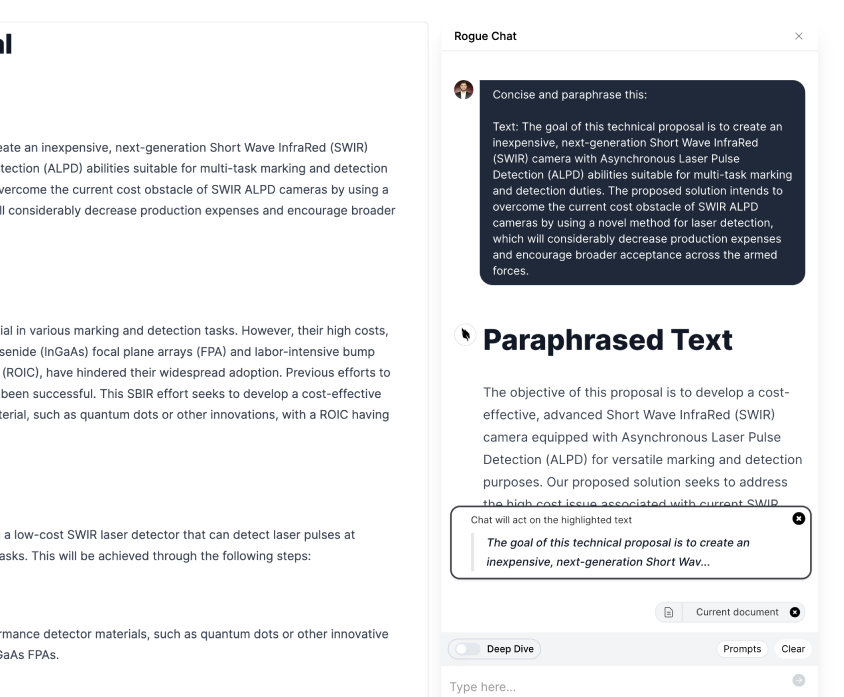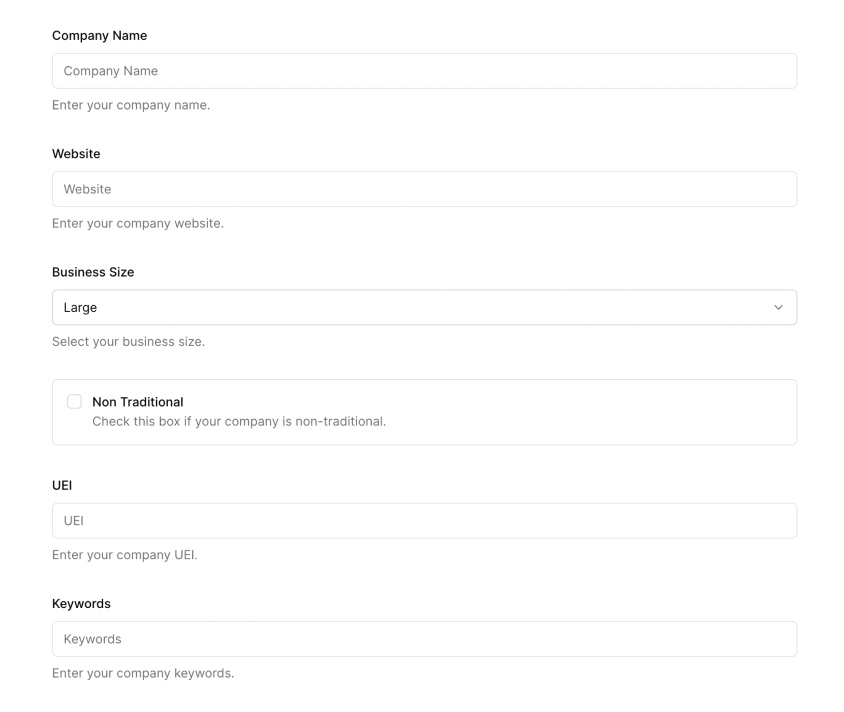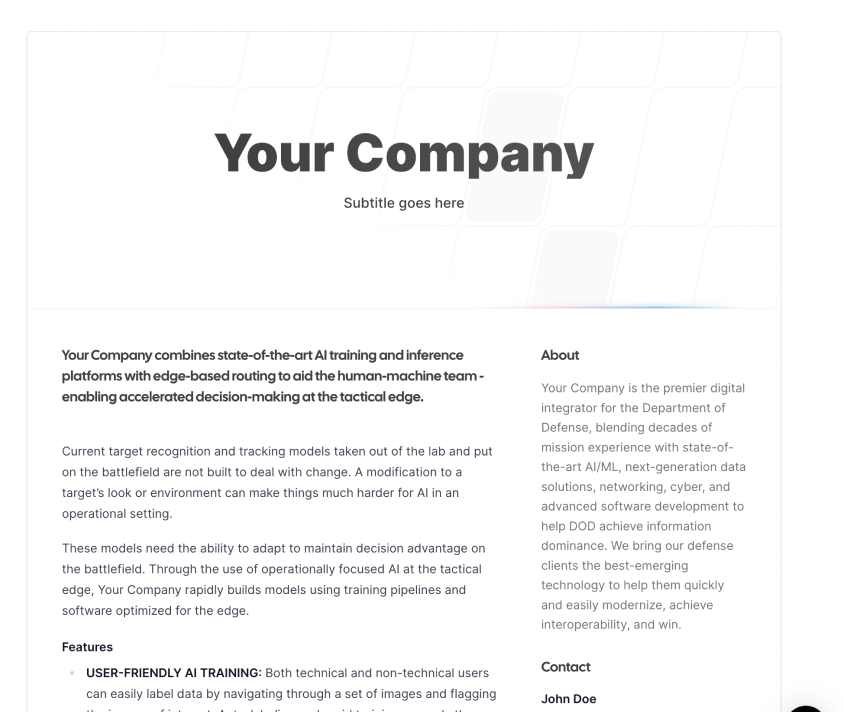
Module 1.0: What is a GPT and Why Should I Care?
You are free to adapt and reuse provided (1) that you provide attribution and link to the original work, and (2) you share alike. This course and all of its contents are the property of UseRogue.com and are offered under the Creative Commons BY-SA 4.0 License.
I. Introduction
As government contractors, we live in an era where technology is not only advancing but also redefining how we work. The more we adapt and embrace these new technologies, the better our prospects for professional growth. Imagine being your age now, but in the 80’s when desktop computers replaced typewriters. Imagine being your age now but in the 90’s when the internet first started connecting the world. Remember when the iPhone came out and we started moving off desktops and onto smartphones. well, welcome to the next step change: generative models like Generative Pretrained Transformers (GPTs).
II. Importance of Building Skills for the Future
The important thing about generative AI is parallel to the desktop, internet, and smartphone: a massive increase in individual productivity and a sea change in user skill. Imagine being the person who made it to the 90’s without learning how to use a computer, or made it to the 2000’s without dialing up to the internet, or someone today who doesn’t have email, Slack, Teams, etc on their phone. Do you want to be that person? How valuable is the person who allows themselves to be passed by new technology.
Now, flip the script, imagine being one of the few people who picked up an IBM or Apple first, who figured out email first, who moved from email to chat apps. How much more valuable are you in the market?
That is you, right now, because you’re here.
With each passing year, technology accelerates exponentially. These advancements have permeated every sector, including government contract work. As a result, our roles are evolving rapidly, and the skills that were once considered adequate are now being replaced with a new set of requirements.
III. The Imperative
Do you know what’s different this time? The pace of change.
The advancement of the computer, the internet and even the latest smartphone model was fairly linear and consistent. Moore’s Law was pretty good about keeping curve the same shape for decades.
Look at how many models have com out since ChatGPT burst on the scene and into our consciousness. The largest companies in the world (Facebook, Google, Microsoft, Amazon, just to name a few) are now in an AI arms race to try and claim domination. To add some spice to the mix, the open source community is picking up everything they publish and forking it at an insane rate.
Bottom line, to stay relevant and competitive in this ever-changing landscape, it is crucial for government contracts like us to continually update and develop our skills because the gap between the first mover and the last mover in this revolution will be dramatically larger than before. By doing so, we not only ensure our job security but also open doors to exciting opportunities that these technological advancements bring along.

Max Roser, Hannah Ritchie, CC BY 4.0 https://creativecommons.org/licenses/by/4.0, via Wikimedia Commons
IV. What is AI?
AI is a term that encompasses a wide range of advanced computer systems, but in this case, we'll focus on "machine learning." Machine learning is what we typically see in AI today: it involves giving computer systems the ability to learn from examples. These systems are often referred to as "neural networks." One of the primary ways these networks learn is by being presented with a large number of examples to learn from, such as images with tags indicating their contents. This process is known as classification. To teach a network how to recognize an elephant, for example, we'd need to provide it with many examples of what an elephant looks like and tag those images accordingly. This is how the model learns to distinguish an elephant from other elements within an image.
V. Understanding Generative Models
Generative models, in layman's terms, are a type of artificial intelligence (AI) that can create new content from scratch because it has consumed billions of examples. They're like an artist who doesn't just copy existing images but can create new ones based on their understanding and interpretation of the world.
How do they work? Imagine teaching a child to recognize dogs. You show them several pictures of different dogs until they can identify a dog when they see one. Generative models work similarly; they are trained with vast amounts of data until they understand the underlying patterns and can generate new data that mimic the original.
These models are everywhere around us. From creating realistic video game environments to personalized recommendations on Netflix or Spotify to even generating art and music, generative models have a broad spectrum of applications.

The Original Benny C, CC BY-SA 4.0 https://creativecommons.org/licenses/by-sa/4.0, via Wikimedia Commons
V. Introducing GPTs (Generative Pretrained Transformers)
A step further into the realm of generative models brings us to GPTs. In simple terms, GPTs are AI models designed to understand and generate human-like text based on the input they receive.
Imagine having a conversation with someone who remembers everything ever written on the internet. That's how GPTs work! They are trained on vast amounts of text data from the internet, enabling them to generate responses that mimic human language.
GPTs have impressive applications in today's world. They can write emails, draft reports, create articles, and even code software! In the context of government work, GPTs can simplify tasks such as drafting policy documents, responding to public inquiries, and analyzing complex data.
📣Wonk Note: You may have heard that Google had the secret to ChatGPT figured out years before ChatGPT came out, this is technically true. There is. paper called Attention is all You Need, it’s a pretty dense paper, so here is a simple summary:
The researchers developed a new type of neural network called a Transformer to help machines translate text between languages.
Neural networks are computer systems modeled on the human brain that can learn tasks by analyzing examples.
The Transformer translates text by paying attention to how words relate to each other in a sentence, regardless of where they are.
This attention-based approach allows the network to translate entire sentences at once, instead of word-by-word.
The Transformer performed better at translating English to German and French compared to previous neural networks.
It was also much faster to train than previous networks, taking only 12 hours!
Beyond translation, the Transformer also did well at analyzing sentence structure, demonstrating it can generalize.
Overall, this Transformer architecture is an exciting advance in neural networks for processing language, thanks to its use of attention and parallelization.
VI. The Role of Generative Models and GPTs in Government Contract Work
Incorporating generative models and GPTs into government contract work can lead to significant improvements in efficiency and productivity. They can automate routine tasks, leaving us with more time to focus on high-value tasks. Humans are good at thinking, coming up with non-linear solutions to problems, etc. The challenge is that in a given 8 hour day, you probably only get to do high-value work one out of those 8 hours. The rest is consume with manual, repetitive, low-value work. Imagine how much more high-value you could do if you reduced your low-value workload by half, or more.
The good news is that GovCon has lots of these tasks, and those are the tasks that AI are best at performing, so there’s a lot of latent opportunity for you. We will walk through a number of practical use cases through this course so you get hands-on practical experience using the tools for tasks that are relevant.
VII. How to Develop Skills in Using Generative Models and GPTs
Use them!
Developing skills in technologies such as generative models may seem daunting initially due to the number, diversity, and jargon-laden terms used to describe them. However, with the increasing demand for skilled professionals in these areas, it is worth investing time and effort to learn them.
Fortunately, there are several open-source platforms available that allow you to experiment with generative models and gain a better understanding of their workings. By taking advantage of these platforms, you can explore different techniques, try out various models, and learn through trial and error. In addition, there are online communities and forums where you can connect with other enthusiasts and experts to exchange ideas, ask questions, and get feedback on your work.
As you develop your skills in generative models, you may find that they have applications beyond your initial area of interest. For example, you may discover new ways to use these models in fields such as art, music, or healthcare. By continuing to learn and explore, you can expand your horizons and open up new opportunities for yourself. So don't be intimidated by the complexity of these technologies - embrace the challenge and see where it takes you!
VIII. Welcome to the Future
The future of government contract work is here, and it is tech-driven. As technology continues to evolve at breakneck speed, staying updated is no longer optional but a necessity.
Adapting to new technologies like generative models and GPTs will not only make us more efficient but also open up new avenues for professional growth. Let's embrace these advancements and start learning about generative models and GPTs today – because the future waits for no one!
IX. Practical Exercise
- Think about the top 3 things you want AI to do for you, be realistic, tangible things you do today that you a literally waiting for AI to do for you.
- Summarize them into short descriptions (two sentences each, max)
- Post them in the LI group
- Find someone else who has a similar/same challenge and comment
- Leave feedback below
GovCon GPT Masterclass
31 lessons
Sign up for Rogue today!
Get started with Rogue and experience the best proposal writing tool in the industry.



